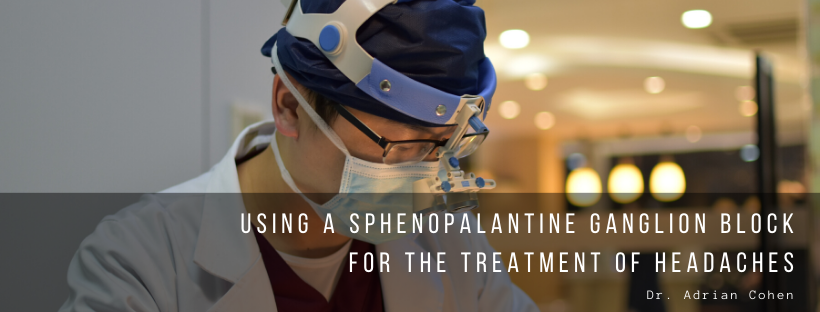When it comes to migraines and other primary headache disorders, the autonomic nervous system is typically involved, with the trigeminal nerve being the main nerve involved in them. The sphenopalatine ganglion is a collection of nerve cells that are closely associated with the trigeminal nerve and has connections to the brainstem and meninges through this nerve. When inflammation and the opening of blood vessels around the meninges occur, they send pain impulses through the trigeminal nerve, and in the case of migraine and cluster headaches, these pain signals pass through the SPG. A common hypothesis is that by blocking the SPG, pain relief can be produced from primary headaches by modulating the autonomic fibres involved in headache disorders. These blocks have had many positive results, but there is only so much evidence for its use in the emergency department.
When performing an SPG block, there are several methods you can perform. The most common approaches include transnasal, transoral, and lateral infratemporal, with the transnasal approach being the easiest and most practical way of performing the block in the emergency department. This approach has a few advantages over the others; it’s a fast and safe way of performing the block, it’s easy for patients to tolerate with little risk of complications, and it’s non-invasive compared to other methods due to avoiding the use of needles.
Technique
Performing an SPG block in the emergency department typically uses supplies that can be found in any ED. You’ll want to begin by soaking a 10-centimetre cotton-tipped applicator in local anesthetic, typically either 1% to 4% lidocaine or 0.5% bupivacaine. Next, you’ll want to make sure the patient’s head is in a sniffing position and insert the soaked applicator into the naris, on the unilateral side of the patient’s headache. Make sure to apply firm and steady pressure along the superior border of the middle turbinate. Do this until you meet resistance at the posterior wall of the nasopharynx, which is when the anesthetic should contact the SPG and anesthetize the ganglion. You’ll then leave the applicator there for about 5-10 minutes, which should result in the patient experiencing a vast improvement or resolution of their headache.SPG blocks are a satisfactory option for patients suffering from primary headaches but more studies need to be performed before they’re considered standard first-line therapy for migraines and the like.

